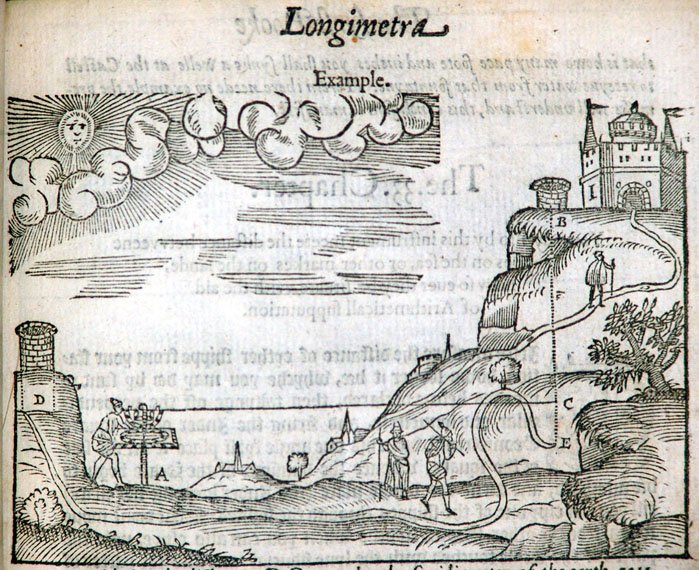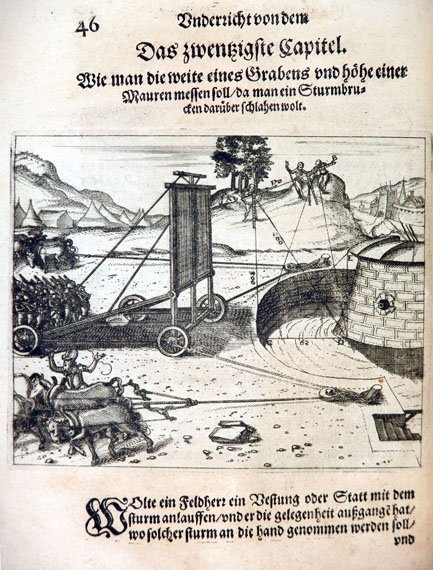Measuring Space
Geometry (from the Greek for "measurement of the earth") exists at the border between theory and practice. Books on geometry are correspondingly attentive to the relationship between abstraction and application as that informs their own usefulness and relevance as text. The three treatises in this section foreground specific instruments of measurement as technologies through which geometry might be practically and theoretically advanced. At the same time, they demonstrate the extent to which the book itself was a technology: in the manner of Dürer's great Art of Measurement (see Making Books, Using Books section), all three are in vernacular languages, making them available to a relatively broad range of readers and practitioners, and all combine explanatory narrative and graphic illustration as mutually reinforcing forms of instruction. These are, moreover, small books, easily portable and therefore usable within the actual situations or scenes of measurement that they variously represent.
Ottavio Fabri's beautifully illustrated treatise on the squadra mobile, a newly invented adjustable set square (Item 1), promoted the instrument by demonstrating its theory and usefulness to cartographers, surveyors, navigators and others involved in the measurement of distance and depth. The first part of Thomas Digges's A Geometrical Practise (Item 2) similarly teaches Euclidean principles through the application of traditional instruments such as the geometrical square, semicircle and planisphere. The illustration shown, on the use of the geometric square for measuring the distance between ships on the sea, underscores Digges's sense that practice perfects knowledge of theoretical principle. This is a point that Digges makes in terms of what it means to apply his own book in situations other than those it has illustrated: by "searching out the reason and demonstration" of the book's basic principles, he notes, "the diligent practizioner" will learn to think for himself and discover or "inuent manifolde meanes to resolue the like or other stranger questions...."
The Greek "Pantometria" of Digges's title promises a measurement useful everywhere; implicit here is a kind of utopian ideal of a fully measurable universe, but such hyperbole can be thought of, too, as masking specific, more worldly uses. Like Fabri's manual, Leonhard Zubler's book (Item 3) was also an advertisement for a new chorographic instrument, usable in a number of contexts for measuring land. The chapter heading to the military illustration shown translates "How to measure the width of a moat and height of a wall to be breached." The picture makes vivid just how important, in an age of militaristic and technological expansion, manuals of measurement were for practicing and perfecting the art of war.



